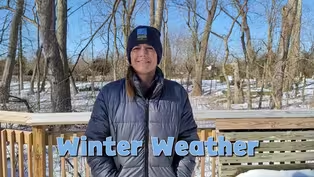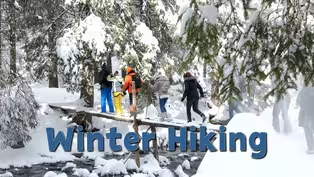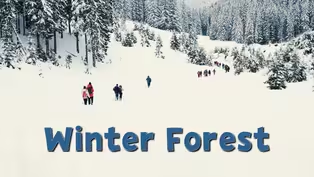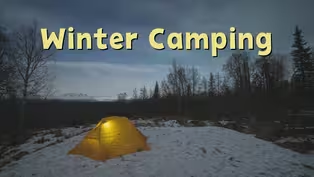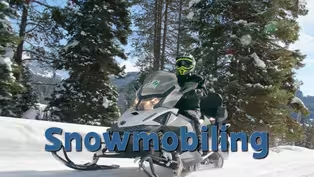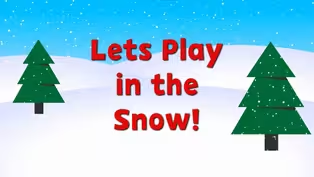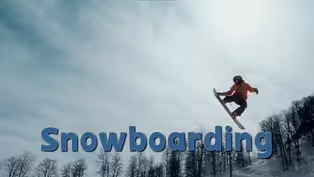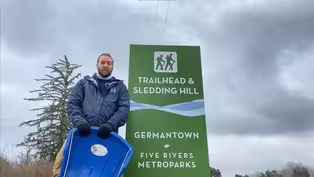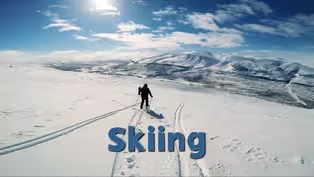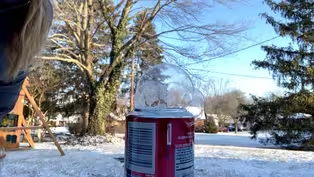CET/ThinkTV Education
What Makes Snow?
12/12/2022 | 2m 23sVideo has Closed Captions
Come learn what makes snow with our Dayton Metroparks crew!
Why is snow cold? How does snow work? Why does it only snow in the winter? All of these questions and more can be answered in this video about what makes snow!
Problems playing video? | Closed Captioning Feedback
Problems playing video? | Closed Captioning Feedback
CET/ThinkTV Education is a local public television program presented by CET and ThinkTV
CET/ThinkTV Education
What Makes Snow?
12/12/2022 | 2m 23sVideo has Closed Captions
Why is snow cold? How does snow work? Why does it only snow in the winter? All of these questions and more can be answered in this video about what makes snow!
Problems playing video? | Closed Captioning Feedback
How to Watch CET/ThinkTV Education
CET/ThinkTV Education is available to stream on pbs.org and the free PBS App, available on iPhone, Apple TV, Android TV, Android smartphones, Amazon Fire TV, Amazon Fire Tablet, Roku, Samsung Smart TV, and Vizio.
Providing Support for PBS.org
Learn Moreabout PBS online sponsorshipMore from This Collection
Video has Closed Captions
Better understand how winter weather is created from our Dayton Metropark crew! (3m 17s)
Video has Closed Captions
Think it's too cold outside? Think again! Learn what you can do in the cold with Ava. (2m 14s)
Video has Closed Captions
Have fun and come visit a virtual winter forest with us! (38s)
Video has Closed Captions
Camping is fun, but have you ever been camping in the winter? (1m 47s)
Video has Closed Captions
Not sure what to do in the snow? Watch this video and find out all the amazing snow day ac (1m 35s)
Video has Closed Captions
Never been sledding before? Look no further! Here you'll find all your sledding tips. (1m 4s)
Video has Closed Captions
Learn how to make ice crystals in the wintertime with this fun science craft video! (2m 16s)
Video has Closed Captions
Follow other kids in the Dayton Metroparks as they search for animal tracks (1m 10s)
Providing Support for PBS.org
Learn Moreabout PBS online sponsorship- What if I asked you what winter looks like, and feels like?
Chances are, you might mention a day like today, a day with cold temperatures, and this fun, fluffy white stuff flying through the air, that is so much fun to play in.
So what exactly makes a snowy winter day?
It starts with water.
The Earth is a water planet, and the water on our planet is constantly moving in something called the water cycle.
In the water cycle, heat from the Sun, and other natural processes, causes water vapor to be released from oceans, lakes, rivers, even plants, and animals into the air.
Air currents carry the water vapor up into the atmosphere where it's colder, and the water vapor wraps around dust and other particles in the air, condensing into water droplets.
When you look up and see the clouds, you are seeing part of the water cycle in action.
The droplets stick together and grow bigger.
When they get heavy enough, they fall out of the sky as precipitation.
And what precipitation means, is just the form that the water takes, whether it's rain on a warmer day, or snow on a day like today.
You have to have the right conditions for it to snow.
You have to have cold temperatures, and moisture in the air, without moisture, it won't snow.
Antarctica is a long way from where we are in Ohio, and even though it is one of the coldest and iciest places on Earth, if you go to the Dry Valleys, in Antarctica, you'll notice something funny, there's no snow.
That's because there isn't any moisture in the air, and without moisture in the air, the snow will not form.
Snow is precipitation in the form of ice crystals.
It starts in the clouds when temperatures are below freezing point.
Snowflakes form when water vapor freezes on the original snow crystal, so you can think of snow crystals, as baby snowflakes.
They grow new crystals, as they fall to form a six-sided snowflake.
Every snowflake has six arms, and all of the arms look the same because they experience the same conditions as they fall through the atmosphere.
Each snowflake you see, though, is unique, just like you because no two snowflakes take the same path, as they fall to the surface of the Earth.
The temperature also affects the shape of the snowflakes that you see.
Support for PBS provided by:
CET/ThinkTV Education is a local public television program presented by CET and ThinkTV
